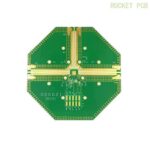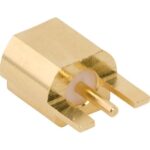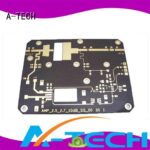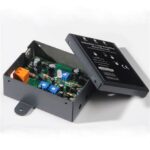Introduction to Xenon Flash Circuits
A xenon flash circuit is an electronic circuit that generates a high-intensity burst of light using a xenon flash tube. Xenon flash tubes are gas-discharge lamps that produce a bright, white light when a high voltage is applied across their electrodes. These circuits are commonly used in photography, strobe lights, and other applications requiring a powerful, short-duration light source.
How Xenon Flash Tubes Work
Xenon flash tubes consist of a sealed glass or quartz tube filled with xenon gas. The tube contains two electrodes, an anode and a cathode, connected to a high-voltage power source. When a high voltage is applied across the electrodes, the xenon gas ionizes, creating a conductive path between the electrodes. This allows a large current to flow through the tube, causing the xenon gas to emit a bright flash of light.
Advantages of Xenon Flash Circuits
Xenon flash circuits offer several advantages over other light sources:
- High intensity: Xenon flash tubes can produce extremely bright light, making them suitable for applications requiring a powerful light source.
- Short duration: The light emitted by a xenon flash tube is very brief, typically lasting only a few microseconds to a few milliseconds. This makes them ideal for capturing fast-moving objects or freezing motion in photography.
- Wide spectrum: Xenon flash tubes emit a broad spectrum of light, closely resembling daylight. This makes them useful for color-critical applications, such as photography and color matching.
- Long lifespan: Xenon flash tubes have a relatively long lifespan compared to other light sources, as they do not have a filament that can burn out.
Components Required for a Xenon Flash Circuit
To build a xenon flash circuit, you will need the following components:
- Xenon flash tube
- High-voltage power supply
- Trigger transformer
- Storage capacitor
- Trigger capacitor
- Resistors
- Diodes
- Thyristor or IGBT (Insulated Gate Bipolar Transistor)
- Printed Circuit Board (PCB) or breadboard
Xenon Flash Tube
The xenon flash tube is the heart of the circuit. It is a gas-discharge lamp that produces a bright flash of light when a high voltage is applied across its electrodes. Xenon flash tubes come in various sizes and shapes, depending on the application and the desired light output.
High-Voltage Power Supply
A high-voltage power supply is required to charge the storage capacitor and provide the necessary voltage for the xenon flash tube. The power supply typically ranges from a few hundred volts to several kilovolts, depending on the size and type of the xenon flash tube.
Trigger Transformer
The trigger transformer is used to generate a high-voltage pulse to ionize the xenon gas in the flash tube, initiating the flash. The primary winding of the trigger transformer is connected to the trigger circuit, while the secondary winding is connected to the trigger electrode of the xenon flash tube.
Storage Capacitor
The storage capacitor is charged by the high-voltage power supply and stores the energy required for the flash. When the flash is triggered, the stored energy is rapidly discharged through the xenon flash tube, producing the bright light.
Trigger Capacitor
The trigger capacitor is charged by the high-voltage power supply and is used to provide the initial high-voltage pulse to the trigger transformer. When the trigger capacitor is discharged, it induces a high-voltage pulse in the secondary winding of the trigger transformer, which ionizes the xenon gas in the flash tube.
Resistors and Diodes
Resistors are used to limit the current in various parts of the circuit, while diodes are used for rectification and protection against reverse voltage spikes.
Thyristor or IGBT
A thyristor or IGBT is used as a switch to control the discharge of the storage capacitor through the xenon flash tube. When a trigger pulse is applied to the gate of the thyristor or IGBT, it allows the stored energy in the capacitor to flow through the flash tube, producing the flash.
PCB or Breadboard
A printed circuit board (PCB) or breadboard is used to mount and connect the components of the xenon flash circuit.
Xenon Flash Circuit Design
Basic Circuit Diagram
Here is a basic circuit diagram for a xenon flash circuit:
+---------------------+
| |
| High-Voltage |
| Power Supply |
| |
+---------------------+
|
|
+---------------------+
| |
| Storage |
| Capacitor |
| |
+---------------------+
|
|
+---------------------+
| |
| Thyristor |
| or IGBT |
| |
+---------------------+
|
|
+---------------------+
| |
| Xenon Flash |
| Tube |
| |
+---------------------+
|
|
+---------------------+
| |
| Trigger |
| Circuit |
| |
+---------------------+
Step-by-Step Assembly Instructions
-
Begin by selecting the appropriate xenon flash tube for your application. Consider factors such as the desired light output, flash duration, and physical size of the tube.
-
Choose a high-voltage power supply that can provide the necessary voltage and current for your xenon flash tube. The power supply should be capable of charging the storage capacitor to the required voltage.
-
Select a storage capacitor with a suitable voltage rating and capacitance. The capacitance will determine the total energy available for the flash, while the voltage rating must be higher than the maximum voltage provided by the power supply.
-
Choose a thyristor or IGBT with appropriate voltage and current ratings to control the discharge of the storage capacitor through the xenon flash tube.
-
Design the trigger circuit, which typically consists of a trigger capacitor, a trigger transformer, and a few resistors and diodes. The trigger circuit generates the high-voltage pulse required to ionize the xenon gas in the flash tube.
-
Create a PCB layout or use a breadboard to mount and connect the components according to the circuit diagram.
-
Mount the xenon flash tube in a suitable reflector or housing, ensuring proper electrical connections to the electrodes.
-
Connect the high-voltage power supply to the storage capacitor and the trigger circuit.
-
Test the circuit by applying power to the high-voltage supply and triggering the flash using the trigger circuit. Observe the brightness and duration of the flash, and make any necessary adjustments to the component values or connections.
-
Once the circuit is functioning correctly, you can integrate it into your desired application, such as a camera flash, strobe light, or other light-emitting devices.

Safety Considerations
Working with high-voltage circuits can be dangerous, so it is essential to take appropriate safety precautions:
- Always disconnect the power supply before working on the circuit.
- Use insulated tools and wear protective gear, such as rubber gloves and safety glasses.
- Ensure proper grounding of the circuit and equipment.
- Be aware of the high voltages present in the circuit and avoid touching exposed conductors.
- Discharge the storage capacitor before handling the circuit to avoid electric shock.
- Work in a well-ventilated area, as xenon flash tubes can produce ozone during operation.
Applications of Xenon Flash Circuits
Xenon flash circuits find applications in various fields:
- Photography: Used in camera flashes and studio lighting equipment to provide bright, short-duration light for capturing images.
- Strobe lights: Used in entertainment and scientific applications to create pulsing light effects or to freeze motion.
- Optical measurement: Used in instruments such as spectrometers and colorimeters to provide a high-intensity, wide-spectrum light source.
- Medical and aesthetic treatments: Used in devices for hair removal, skin rejuvenation, and other light-based therapies.
- Industrial inspection: Used in machine vision systems to provide bright, uniform illumination for inspecting products or materials.
Troubleshooting and Maintenance
If you encounter issues with your xenon flash circuit, consider the following troubleshooting tips:
- Check all connections to ensure they are secure and properly insulated.
- Verify that the component values are correct and that the components are functioning properly.
- Ensure that the high-voltage power supply is providing the correct voltage and current.
- Check the trigger circuit for proper operation, ensuring that it generates a sufficient high-voltage pulse to ionize the xenon gas.
- Inspect the xenon flash tube for any signs of damage or wear, such as cracks or discoloration. Replace the tube if necessary.
To maintain the performance and longevity of your xenon flash circuit, follow these guidelines:
- Keep the circuit clean and free from dust and debris.
- Regularly inspect the components for signs of wear or damage, and replace them as needed.
- Store the circuit in a dry, cool place when not in use to avoid moisture damage and prolong the life of the components.
- Follow the manufacturer’s recommendations for the xenon flash tube regarding the maximum flash rate and duty cycle to prevent overheating and premature failure.
Frequently Asked Questions (FAQ)
- What is the typical voltage required for a xenon flash tube?
-
The voltage required for a xenon flash tube depends on its size and design but typically ranges from a few hundred volts to several kilovolts. Smaller flash tubes may require voltages in the range of 200-600V, while larger tubes may need voltages up to 5kV or more.
-
How long does a xenon flash tube last?
-
The lifespan of a xenon flash tube depends on factors such as the operating voltage, flash rate, and duty cycle. With proper use and maintenance, a xenon flash tube can last for several million flashes. However, the intensity of the light output may gradually decrease over time.
-
Can I use a regular power supply instead of a high-voltage power supply?
-
No, a regular power supply cannot provide the high voltage required to ionize the xenon gas and operate the flash tube. A dedicated high-voltage power supply designed for xenon flash circuits is necessary.
-
What determines the brightness and duration of the flash?
-
The brightness of the flash is primarily determined by the energy stored in the storage capacitor, which depends on its capacitance and the charging voltage. The duration of the flash is influenced by the inductance of the discharge loop and the characteristics of the xenon flash tube.
-
Are there any special handling or disposal requirements for xenon flash tubes?
- Xenon flash tubes contain a small amount of mercury, so they should be handled with care to avoid breakage. When disposing of used or broken tubes, follow local regulations for the proper disposal of mercury-containing devices. Some manufacturers offer recycling programs for xenon flash tubes.
Conclusion
Building a xenon flash circuit requires careful selection of components, proper circuit design, and attention to safety precautions. By understanding the principles behind xenon flash tubes and the role of each component in the circuit, you can create a reliable and efficient light source for various applications.
Remember to prioritize safety when working with high-voltage circuits, and always follow best practices for handling and maintaining the components. With the right knowledge and tools, you can harness the power of xenon flash tubes to create bright, short-duration light pulses for photography, strobe lighting, and other applications.
As you continue to explore the world of xenon flash circuits, stay informed about the latest advancements in technology and design techniques. By staying up-to-date and experimenting with different configurations, you can push the boundaries of what is possible with these versatile and powerful light sources.






Leave a Reply